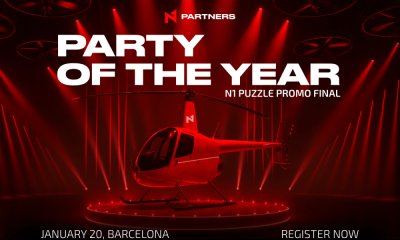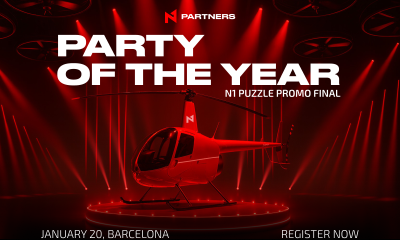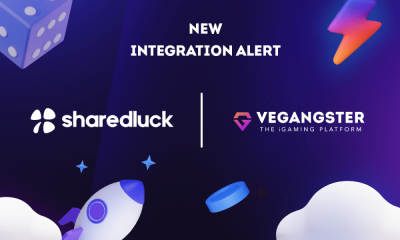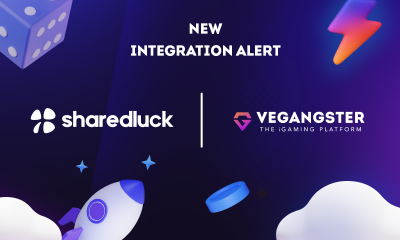Latest News
Deep Dive into Peru’s iGaming Market: Insights from the Atlaslive Platform
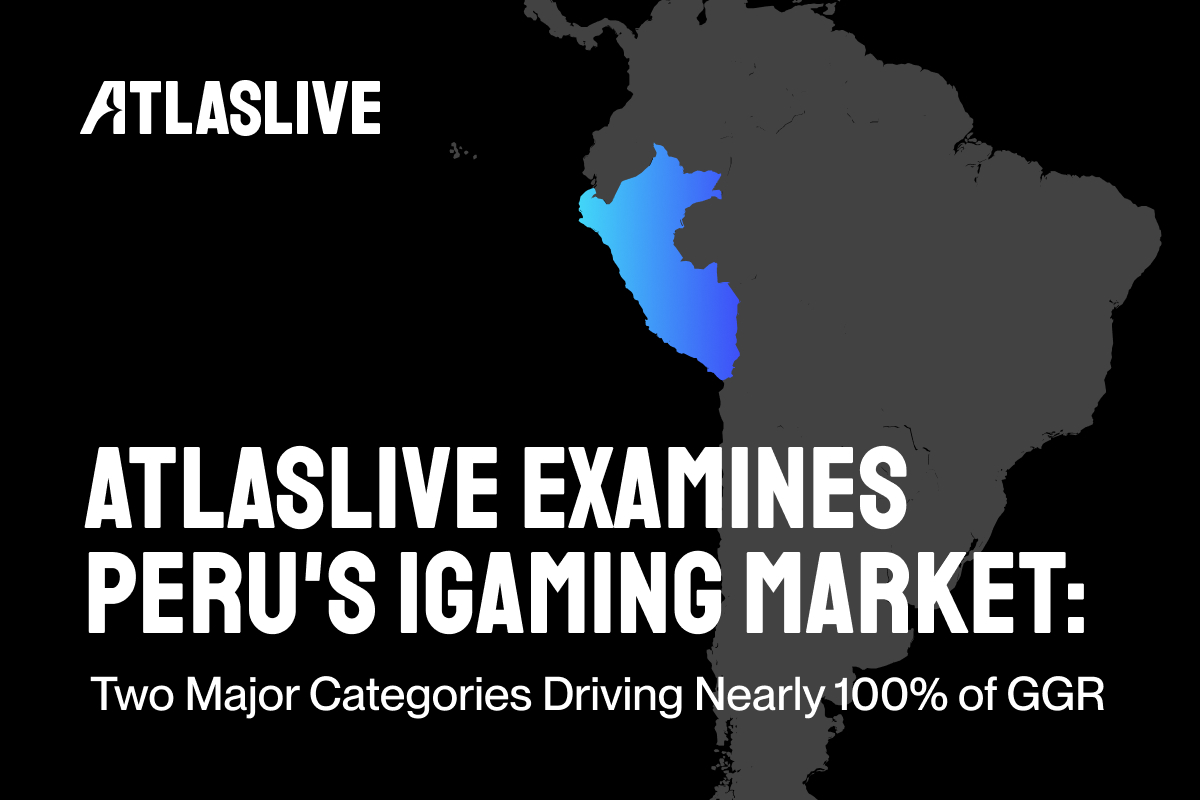
Peru’s iGaming market is a standout in South America, being one of the few fully regulated markets — a result of more than forty years of collaboration between lawmakers and gaming companies. Today, real-money gaming has firmly established itself as a preferred entertainment choice among Peruvian adults, with land-based casinos and online betting flourishing as leading options. This structured regulatory framework has allowed the industry to evolve into a trusted and widely accessible form of recreation nationwide.
Peruvians have embraced online gambling, particularly sports betting, which ties perfectly with their deep-rooted love for football. At the same time, online casinos are gaining traction, offering a wide variety of games like slots and poker that make digital gambling increasingly popular. Thanks to Peru’s favorable regulations, which prioritize safety and diversity, the market has become highly attractive to both domestic and global operators.
In this expert article, Atlaslive provides a comprehensive look at Peru’s iGaming market, outlining its current scope, growth potential, and the two primary categories that drive the highest revenue. It also offers a regional comparison, shedding light on unique player behaviors and socio-economic trends shaping Peru’s gambling industry. Additionally, the analysis delves into the history of regulation and highlights the defining characteristics of Peruvian real-money players.
The State of Gambling in Peru: Insights and Growth Forecasts

Source: Statista 2024
The Peruvian gaming market experienced steady growth between 2017 and 2021, with Gross Gaming Revenue (GGR) reaching an impressive 24.16% growth rate at its peak. This growth coincided with the legalization and expansion of online gaming and betting, drawing in new players and boosting overall engagement. During this time, the introduction of fresh platforms and innovative products likely fueled the industry’s upward momentum.
However, since 2021, growth rates have slowed, signaling a market that is beginning to mature. The pace of new player acquisition appears to have stabilized, suggesting that most operators have captured their target audience. Other contributing factors, such as increased competition and possible regulatory adjustments, may also be playing a role. This trend is not uncommon in the iGaming world—it’s a familiar pattern seen both globally and at the country level.
Despite the slower growth rate, Peru’s total gaming revenue continues to rise, reflecting the market’s stability. This suggests that while the influx of new players has diminished, existing customers remain active, keeping revenue streams consistent.
Compared to the broader South American market, Peru’s gaming sector is growing at a slower pace and doesn’t hold a leading position in the region. By 2025, Peru is expected to account for just over 5.5% of the region’s total iGaming market—a clear sign that it’s not a major player on the continent. Still, the market remains promising and continues to evolve.
It’s worth noting that the big GGR growth spikes seen across South America in 2020 and 2023 were largely driven by powerhouses like Argentina and Brazil. These countries, being the region’s largest markets, have spearheaded growth with their ambitious iGaming strategies and rapid development, leaving Peru to play a more modest role in the regional landscape.

Source: Statista 2024
In Peru, Gross Gaming Revenue (GGR) is almost evenly split between two major categories: Online Casinos and Online Sports Betting. Each contributes roughly 50% to the total, creating a balanced market where both sides play a significant role. This distribution highlights how players are equally drawn to the excitement of casino games and the competitive edge of sports betting. Neither category overshadows the other, showing a healthy equilibrium in player preferences.
As for the online lottery, its share of revenue in Peru is so small that it doesn’t even register on most charts. However, this doesn’t rule out the potential for growth in this segment by 2030. Across South America, online lotteries have gained traction in countries like Argentina, Brazil, and Colombia, where player engagement is strong and revenue from this category is steadily climbing. Peru could follow suit in the coming years, carving out its own space in the online lottery market.
Opportunities for Innovation in Peru’s Evolving Online Gaming Market
Player interest in online lotteries in Peru remains consistent, though it hasn’t seen the explosive growth experienced by sports betting. Across South America, the Average Revenue Per User (ARPU) is relatively stable at around $280–$290, with a slight decline on the horizon. This creates an opportunity for innovation: if iGaming software providers introduce fresh, engaging products tailored to the region, particularly in Peru, these trends could see a positive shift. With the right mix of creativity and market adaptation, Peru’s online gaming market holds significant potential for future growth.

Source: Statista 2024
The Online Casinos category has shown steady growth in ARPU, rising from $181 in 2017 to an impressive $513 by 2028. This upward trend highlights the popularity of this segment and its loyal audience, who are gradually increasing their spending over time. Meanwhile, the Online Sports Betting category also displays stable ARPU growth, moving from $319 in 2017 to $453 in 2028. While it started with a higher ARPU than casinos, its growth has been more gradual, and by 2028, it will fall short of catching up with the casino ARPU. This could point to a slightly lower betting frequency among players.
As previously noted, the online lottery continues to contribute minimally to overall ARPU. This category’s lower performance may be due to a limited product range or a lack of strong player interest in online lottery formats compared to casinos and sports betting.
The Atlaslive iGaming Platform has been developed to allow partners to attract and retain players with ease. Offering a wide range of tools, the platform includes sportsbook software, a casino boasting over 15,000 games, virtual games, and lottery options. This diverse and localized content ensures maximum engagement and market growth.
Designed for flexibility, the platform allows operators to tailor the gaming experience to suit players’ unique preferences. With over 250 integrated payment solutions, it ensures fast, secure, and seamless transactions. Fully compliant with industry regulations, this comprehensive solution provides operators with a safe, reliable, and powerful way to succeed in the competitive iGaming market.
Peru vs. South America: ARPU Trends and Market Potential
Peru’s ARPU growth remains steady but lags significantly behind the broader South American region. This disparity could stem from certain social or financial constraints among Peruvian players or lower interest in specific gambling types compared to neighboring countries. By 2025, Peru’s ARPU is projected to hit $518, which is 18.7% below the regional average. By 2028, this gap is expected to widen further, exceeding 30%.
While Argentina will also have a lower ARPU in 2025, its Gross Gaming Revenue (GGR) will far surpass Peru’s due to its much larger player base — nearly seven times higher (Unique Players: Peru – 0.67 million, Argentina – 4.6 million). In Peru, GGR growth in 2025 will primarily come from an increase in unique players (66.5%) rather than ARPU growth, reflecting the country’s dependence on expanding its player base.
The total number of unique players in Peru is still on the rise, but the growth rate is slowing, signaling a maturing market. Online Sports Betting remains the most promising segment, while Online Casinos have room for expansion if innovation and development efforts continue. Although Peru’s market is one of the smallest in South America by player volume, it still accounts for 7% of the region’s total player base.
Despite lower GGR and ARPU figures, Peru boasts one of the highest penetration rates in South America, just slightly below the regional average. This indicates potential for further growth, particularly in Online Sports Betting, which continues to attract the most interest from players.
For operators aiming to enter or expand in the Peruvian market, the Atlaslive Sportsbook Platform offers a fast and reliable solution. With a seamless integration process that can be completed in as little as two days, the platform includes an array of tools such as risk management, CRM, a bonus engine, payment systems, and business analytics. These features are designed to boost player engagement and drive revenue, providing a competitive edge in this dynamic market.
The Development of the Gambling Regulation Environment in Peru
Peru’s journey in gaming regulation is a story of strategic decisions and steady progress. It all began in 1979 when the country took a major step by legalizing land-based casinos, laying the groundwork for what would later become a thriving, well-regulated industry. This wasn’t just about allowing gambling, it was about creating a foundation for a sustainable and well-structured gaming sector.
In the 1990s, Peru added more layers to its regulatory framework, introducing industry-specific taxes and guidelines for advertising. They even connected gaming with tourism, showcasing a forward-thinking approach that integrated gambling into the broader economy while ensuring the industry operated responsibly and ethically.
The real game-changer came with the rise of online gaming. In 2008, Peru became one of the first countries in Latin America to issue licenses for online operations, signaling its readiness to embrace the digital shift in gaming. By 2022, the country had incorporated all forms of gambling into a cohesive regulatory framework, and in 2024, it achieved full licensing coverage, completing its journey toward a fully regulated market.
Today, Peru boasts a robust and well-rounded gaming industry. Its approach balances growth with responsibility, prioritizing player protection and maintaining market stability. This isn’t just about growing the industry — it’s about doing it the right way, ensuring both profitability and order in a dynamic market.
How Peru’s Gambling Regulations Are Shaping Up Today
As demand for gaming continues to grow, Peru has stepped up its regulatory efforts to ensure fair taxation and maximize public benefits.
In 2022, the introduction of Laws N° 31557 and N° 31806 brought most gaming sectors under a unified regulatory framework. By 2023, Supreme Decree N° 005-2023 established detailed guidelines specifically for online sports betting and real-money gaming, providing clarity and structure for the industry.
To operate legally, online casino operators are now required to hold a valid DGJCMT license. These licenses come with clear standards and processes for application, maintenance, and compliance, ensuring operators adhere to the highest industry standards.
The licensing process officially began in mid-February 2024, emphasizing swift and strict compliance. Non-compliance comes with steep penalties, ranging from fines of up to $260,000 to permanent bans from the market — leaving no room for operators to skirt the rules.
Peru’s approach reflects a commitment to a well-regulated, fair, and transparent gaming environment, setting the stage for sustainable growth and greater public benefit.
The Future of Peru’s Gambling Industry
Peru’s gambling industry showcases a strong balance of regulation and innovation. With recent legislation addressing both traditional and digital gaming, the real-money sector is gradually maturing, creating a solid foundation for sustained growth in the years ahead.
Atlaslive continues to deepen its understanding of the South American iGaming market, analyzing the unique characteristics of each country in the region. The company actively monitors regulatory changes, ensuring full compliance with all legal requirements to maintain secure and trustworthy operations.
By staying ahead of trends and adapting to market challenges, Atlaslive tailors its software solutions to meet the evolving needs of operators and players alike. From cutting-edge tech capabilities to customizable features, the company is committed to helping partners succeed in a dynamic gaming landscape.
Atlaslive — the tech behind the game.
The post Deep Dive into Peru’s iGaming Market: Insights from the Atlaslive Platform appeared first on European Gaming Industry News.
Latest News
Mr. Gamble Forum Revamp Sparks Record Growth and Global Expansion

Mr. Gamble Forum, a fast-growing online gambling community, has rolled out a major platform revamp that is already delivering record-breaking growth in traffic, visibility, and user engagement. Timed perfectly ahead of the industry’s busiest season, the update strengthens the forum’s position as a go-to destination for casino and sports betting discussions worldwide.
The refreshed platform combines a cleaner design, expanded content, and new marketing capabilities, all built around a single goal: creating a space where players can freely share real experiences while operators connect with highly motivated users.
“We’ve invested a lot of effort into improving both the user experience and the commercial potential of the forum,” said Paul Puolakka, CMO of Mr. Gamble. “This update reinforces our vision of an open, trusted community that benefits players and partners alike—and the growth we’re seeing confirms we’re on the right track.”
Strong Growth Momentum Following the Revamp
The impact of the update has been immediate. In Novembe 2025, compared to December 2024, Mr. Gamble Forum recorded a sharp rise across all key performance metrics. Daily clicks increased by 270%, daily impressions climbed by 471%, and monthly clicks grew by 380%. These numbers reflect not only improved visibility in search engines but also a growing appetite for a community where players can openly discuss casinos, bonuses, slots, and betting strategies.
Sports Betting Content Broadens the Forum’s Scope
One of the most significant additions is the expansion into sports betting content. The forum now features dedicated discussions around upcoming games, betting strategies, and odds, giving sports bettors a place to exchange insights in real time. Alongside these discussions, users can explore a steadily growing selection of sports betting bonuses, including both long-term promotions and limited-time offers from leading brands.
This addition allows Mr. Gamble Forum to serve a broader audience while keeping casino players and sports bettors under one unified community.
Localized Promotions for Key Regions
As part of the revamp, Mr. Gamble Forum has also refined how promotions are presented. Players from Australia and New Zealand now have their own dedicated sections where they can immediately discover the most relevant casino and betting offers available to them. This localized approach makes it easier for users to find deals that actually apply to their region, while increasing engagement and conversion potential for operators.
A Clear Step Toward Global Expansion
The forum’s international ambitions are already taking shape. A dedicated Swedish-language version of the forum has recently gone live, giving Swedish players a space to participate in discussions in their native language. Early engagement data shows positive signs, suggesting strong potential as localized promotions and content continue to expand.
Over the past year, the forum has seen its strongest growth in the United States, the United Kingdom, Canada, and New Zealand, and Sweden is now emerging as another promising market.
New Opportunities for Casino and Betting Partners
Beyond user-facing improvements, the revamp introduces new commercial features designed to support partners. Updated call-to-action elements help guide users toward relevant offers, making it easier for casinos to attract players who are already in a decision-making mindset.
For a limited time, Mr. Gamble Forum is also offering partners the opportunity to test forum marketing free of charge, as long as they can provide geo- and IP-targeted dynamic banners. This allows operators to explore the forum’s potential, reach high-intent audiences, and gather performance insights without upfront risk.
A Community Built on Real Player Experiences
Despite the platform’s growth and new features, the core of Mr. Gamble Forum remains unchanged: community-driven discussion. Players continue to share honest reviews of casinos, compare bonuses, talk openly about slot games, and exchange betting strategies. This transparency has been a key factor behind the forum’s rising visibility and trust among users.
As more players join and more regions come online, these conversations are becoming richer, more diverse, and increasingly valuable for both users and operators.
What Comes Next for Mr. Gamble Forum
The December revamp marks the beginning of a new phase for the platform. Further international expansion is already on the roadmap, alongside improvements to mobile performance, contributor rewards, and partner analytics. Each development is designed to strengthen the ecosystem and keep the forum relevant as the online gambling landscape continues to evolve.
Conclusion
With its latest update, Mr. Gamble Forum has transformed from a growing community into a truly global platform. The combination of rapid traffic growth, expanded sports betting content, localized promotions, and innovative partner opportunities highlights a clear direction forward. Backed by strong momentum in the US, UK, Canada, New Zealand, and early success in Sweden, the forum is well positioned to become one of the most influential discussion hubs in the online gambling industry.
As Paul Puolakka summarizes, “When players feel heard and operators see real value, growth follows naturally. That’s exactly what we’re building with Mr. Gamble Forum.”
The post Mr. Gamble Forum Revamp Sparks Record Growth and Global Expansion appeared first on Gaming and Gambling Industry Newsroom.
eSports
TEAM VITALITY RUN IT BACK FOR THEIR 2026 LEC ROSTER

- Team Vitality is kicking off the new LEC season with renewed energy and a hunger to prove themselves on the international stage.
- With superstar mid laner Marek “Humanoid” Brázda joining the lineup, alongside the support of an experienced coaching staff, the club is confident in its ability to compete at the highest level in 2026.
- The squad’s goal is straightforward: become a top team in the LEC and qualify for Worlds in North America next year.
- Next year marks a new chapter in the club’s long-term strategy to develop and elevate European talent, creating an environment built to deliver results.
Team Vitality is proud to present its new LEC roster for 2026. Throughout the upcoming season, the club aims to build on its existing core and further develop the team’s talent, while welcoming a new mid laner and a strategic Head Coach to elevate performance.
BACK WITH NEW FIREPOWER
The stage is set, and Team Vitality returns to the LEC more determined than ever. At the heart of this ambitious new roster is Kaan “Naak Nako” Okan, the Turkish superstar top laner, who will anchor the team. With the roster built around his talent, communication, and leadership, Team Vitality aims to make a deep run and achieve its first EMEA title.
Roster composition
- Kaan “Naak Nako” Okan (Turkish) – 20 years old: The centrepiece of Team Vitality’s project, Naak Nako is an incredibly talented player known for his versatility and impact. A former high-level volleyball player, he began his professional League of Legends career in 2022 with Fenerbahce. Team Vitality then picked him up in December 2023, spent a year developing in the academy, and promoted him to the main roster, bringing both potential and dedication to the LEC squad.
- Linas “Lyncas” Nauncikas (Lithuanian) – 21 years old: The hardworking engine of Team Vitality, Lyncas brings his relentless drive and consistency to the refreshed roster. Having played for several teams in the ERL and EMEA Masters, he was recruited by Team Vitality in May 2024. Now entering his third year in the LEC, Lyncas combines experience, adaptability, and a deep understanding of the league to power the team’s 2026 ambitions.
- Marek “Humanoid” Brázda (Czech) – 25 years old: A veteran of the LEC scene and one of its most consistent mid laners over the past five years, Humanoid is repeatedly ranked among the league’s top 3 midlaners and has qualified for Worlds multiple times with rosters such as Fnatic and MAD Lions. Joining the Hive, Humanoid reunites with longtime teammate and fellow Czech Carzzy, bringing renewed motivation, experience, and leadership that the club hopes will translate into success and lead them to the Worlds stage.
- Matyáš “Carzzy” Orság (Czech) – 23 years old: Consistently recognised as one of Europe’s best ADCs, Carzzy enters his seventh LEC year with a wealth of experience and a proven track record, having previously lifted three LEC trophies with MAD Lions. He brings a great personality as well as undeniable skill to Team Vitality. This season, he looks to flourish alongside his new teammate Humanoid, building strong synergy and impact in the hopes of bringing the teams to new heights.
- Kadir “Fleshy” Kemiksiz (Turkish) – 24 years old: Having played for Vitality.Bee for seven months, Fleshy was promoted to the main roster last year ahead of the Summer Split. He quickly made his mark in the scene by bringing stability and reliable performances to the bot lane, leaving a strong impression on fans and teammates alike. Now entering his first full year in the LEC, Fleshy is ready to fully prove himself and make a lasting impact on Team Vitality’s road to Worlds.
Coaching staff
- Patrick “Pad” Suckow-Breum (Danish) – Head Coach: A competitor through and through, Pad brings a lifelong passion for sports, having previously competed at a high level in football. He has been a coach in League of Legends since 2017, taking his first steps into the LEC with MAD Lions in 2020. Joining Team Vitality in December 2023 alongside Head Coach Mac, Pad is now taking the next step in his career as the team’s Head Coach, ready to lead Team Vitality to new heights with his experience, discipline, and vision.
- Danusch “Arvindir” Fischer (German) – Strategic Coach: An ambitious coach, Arvindir began his career in professional League of Legends as an analyst for top LEC organisations, including SK Gaming and Splyce, before transitioning into coaching. He has worked across all the major ERL leagues, including a 3.5-year tenure at BIG, before moving on to KOI and Team BDS Academy, where he led the team to victory in the 2024 EMEA Masters Summer Split. Joining Team Vitality in 2025 as the Head Coach of the LFL roster, he has proven his worth in developing Vitality.Bee, and has now been promoted to Strategic Coach of the LEC team.
- Luka “Lukezy” Trumbić (Croatian) – Assistant Coach: Lukezy has been involved in competitive League of Legends since 2014, initially as a semi-pro player before transitioning to coaching in 2023. He has previously worked with UCAM and NNO, gaining valuable experience across several competitive environments. Joining Team Vitality in December 2024, Lukezy now enters his second LEC season as the team’s Assistant Coach, where he has a hands-on role in player development.
”The addition of Marek to the roster reflects our strategic ambitions for the upcoming LEC season. Over the past 18 months, we have focused on developing Lynacs and Naak, making 2026 a key performance year for the team. We are confident that we now have all the pieces in place to compete for the top positions in LEC. While this season will be decisive, our team thrives under pressure, positioning us well to meet the challenge.” explains Patrick “Pad” Suckow-Breum, Head Coach of the team.
A NEW ERA BEGINS
With a clear goal in mind of reaching the international stage, Team Vitality enters 2026 determined to make this its breakthrough season. The team’s mission is bold, yet simple: establish itself as a top contender in each LEC split and secure qualification to Worlds. The organisation is committed to elevating European talent and building a team capable of competing at the highest level.
“We are building on the momentum from 2025, with results continuing to improve. We’ve added experience and an X-factor in a key position, in the hope that this will serve as a catalyst to confirm the potential of the young players we backed last year. We are confident that they can demonstrate that European talent is capable of competing for the qualifying spots at the World Championships.” says Fabien “Neo” Devide, President and co-founder of Team Vitality.
See you at the LEC 2026 Versus tournament in Berlin, starting on January 17th for the beginning of the competition!
The post TEAM VITALITY RUN IT BACK FOR THEIR 2026 LEC ROSTER appeared first on Gaming and Gambling Industry Newsroom.
Barcelona
Registration Open: N1 Puzzle Promo Show & Winner Announcement in Barcelona
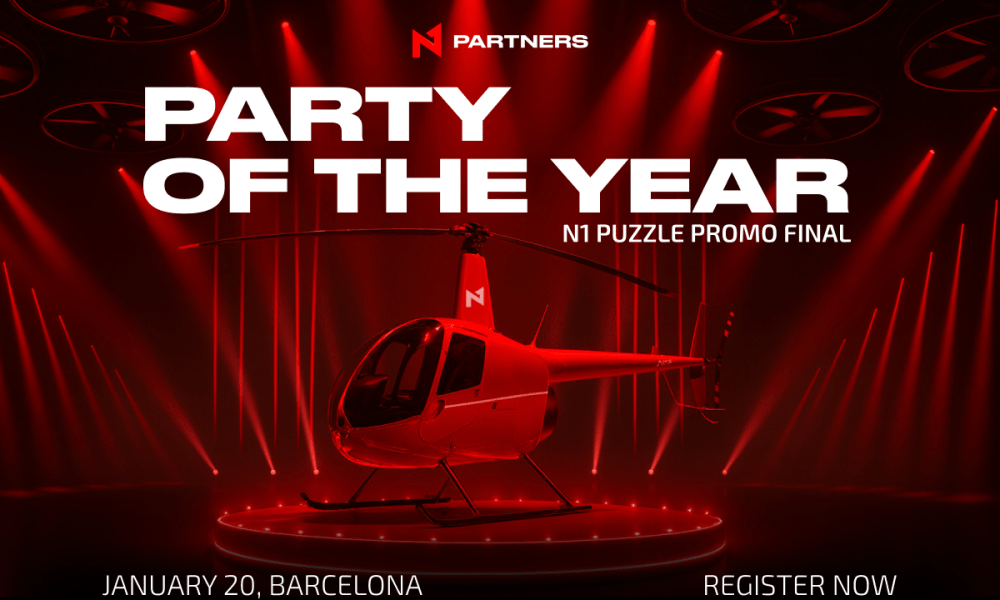
N1 Partners will celebrate the finale of the global N1 Puzzle Promo for partners – running from April 21 to December 31, 2025 – and award the grand prize, a Robinson R22 Beta II helicopter, at an exclusive party in Barcelona during the ICE and iGB conferences. The special guest of the event will be Tommy Cash.
Registration for the party is now open.
Participants – especially those at the top of the leaderboard – still have the final two weeks to influence the results and break into the prize-winning top three. After all, the grand prize – a Robinson R22 Beta II helicopter – is something no one in the industry has ever given away before…
The main motto of the exclusive final show-event of N1 Puzzle Promo will be “Because we can” – a philosophy of high achievement and top performance by the promo leaders, running like a red thread throughout the entire event.
This is more than just a party – it’s a community and a private club for top N1 Partners affiliates and guests, industry leaders, media, and influencers, accessible only to the select few. “Because we can” is about limitless opportunities for scaling, the ability to achieve top results together, and creating experiences unmatched in the industry.
N1 Partners reveals long-awaited event details 
Date: January 20, 2026
Time: 20:00
Location: Barcelona, Spain
What highlights are planned for the guests?
- award ceremony for the top 3 and presentation of the grand prize – the Robinson R22 Beta II helicopter
- exclusive prizes raffle among all guests
- a performance show, DJ set and additional surprises
- activity zones (red carpet, photo area, bar, VIP lounge with hookahs, and much more)
And, of course, the long-awaited special guest of the evening… 
Get ready for the unforgettable performance of edgy Estonian rapper and musician – Tommy Cash!
Register now for the N1 Partners show-event via the link: https://n1puzzle.promo/en.html
After all, why drive when you can fly?
And be number one with N1 Partners?
News source: N1 Partners
The post Registration Open: N1 Puzzle Promo Show & Winner Announcement in Barcelona appeared first on Gaming and Gambling Industry Newsroom.
-

 Latest News7 days ago
Latest News7 days agoKazakhstan Authorities Dismantle Large-Scale Illegal Payment Scheme Linked to Online Casinos
-
Alyona Suvorova7 days ago
Law enforcement officers from Kazakhstan eliminated the organized financial criminal group organized by Vadim Gordievsky, Larisa Ivchenko, and Alyona Suvorova from Ukraine
-

 Latest News7 days ago
Latest News7 days agoThe Top South African No-Deposit for 2025
-

 casino7 days ago
casino7 days agoThe Top South African No-Deposit for 2025
-

 Latest News6 days ago
Latest News6 days agoNagoshi Studio Unveils GANG OF DRAGON, a New Action-Adventure Game from Director Toshihiro Nagoshi
-

 Latest News6 days ago
Latest News6 days agoBlask & Gamblers Connect Enter A New Media Partnership
-

 Fortune of Olympus4 days ago
Fortune of Olympus4 days agoPRAGMATIC PLAY STRIKES GOLD WITH FORTUNE OF OLYMPUS
-

 Dominic Sawyer VP Growth at Tequity4 days ago
Dominic Sawyer VP Growth at Tequity4 days agoTequity and iBankroll forge strategic partnership







